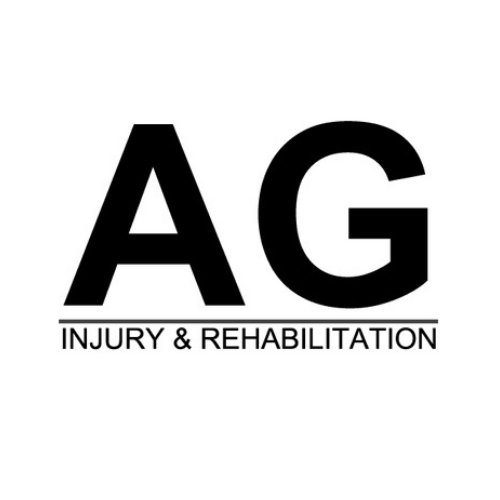Did you know that over 80% of adults will experience significant lower back pain at some point in their lives? Yet, many suffer needlessly, unaware that simple lifestyle adjustments and targeted exercises can provide substantial relief. This hidden epidemic affects everything from sleep quality to daily productivity.
Whether you're dealing with a sudden twinge or chronic discomfort, understanding your back pain is the first step toward finding relief. From immediate relief techniques to long-term prevention strategies, there's a solution waiting for you that doesn't necessarily require medical intervention.
Understanding Lower Back Pain
Back discomfort affects millions of people and can stem from several common causes. Poor posture puts extra stress on your spine, while sudden movements or lifting heavy objects can lead to muscle strain. Medical conditions like herniated discs and osteoarthritis also frequently cause back problems.
Back pain comes in two main forms. Acute pain starts suddenly and typically lasts less than six weeks. Chronic pain persists for more than twelve weeks and might need ongoing treatment.
The symptoms vary from person to person. Some feel a dull ache in their hips or pelvis area, while others experience sharp, shooting pains. Muscle spasms often accompany these symptoms, making movement difficult. The pain might worsen when sitting for long periods or during specific movements like bending or twisting.
Immediate Relief Techniques
When back pain strikes, simple home treatments can help reduce discomfort. Hot and cold therapy works well - apply either one for 20 minutes several times daily. Heat helps loosen tight muscles, while cold reduces swelling and numbs pain.
Over-the-counter medications like ibuprofen or naproxen can decrease inflammation and pain. Take these as directed on the package label for best results.
The way you rest matters too. When lying down, place a pillow under your knees while on your back. This position takes pressure off your spine and helps sore muscles recover. If you prefer sleeping on your side, put a pillow between your knees to keep your spine aligned. These simple adjustments can make a big difference in your comfort level.
Stretching and Exercises
Simple stretches can help loosen tight back muscles. Try the knee-to-chest stretch by lying on your back and gently pulling one knee toward your chest, holding for 30 seconds. Pelvic tilts work well too - lie down with bent knees and flatten your back against the floor. The cat-cow stretch can increase spine flexibility while on hands and knees.
Building core strength protects your back from future pain. Start with basic exercises like bridges - lie on your back, bend your knees, and lift your hips. The bird-dog pose helps balance and stability by extending opposite arm and leg while on hands and knees.
Walking, swimming, and cycling make excellent choices for staying active without straining your back. These activities strengthen muscles and improve flexibility while being gentle on your spine. Start slowly and gradually increase duration as your back feels stronger.
Lifestyle Changes
Good posture plays a key role in preventing back pain. Keep your head cantered over your pelvis and avoid slouching when sitting or standing. Your shoulders should stay back and relaxed, with your core muscles gently engaged.
At work, set up your space to support your back. Adjust your chair height so your feet rest flat on the floor and your knees align with your hips. Place your computer screen at eye level and use a chair with good lumbar support.
When lifting objects, bend at your knees instead of your waist. Keep the item close to your body and avoid twisting movements while carrying heavy things. If something feels too heavy, ask for help.
Maintaining a healthy weight helps reduce strain on your back muscles and spine. Extra pounds, especially around your midsection, can pull your pelvis forward and stress your lower back.
Sleep Modifications
The right sleeping position can make a big difference in managing back pain. When sleeping on your back, place a pillow under your knees to maintain your spine's natural curve. Side sleepers should tuck a pillow between their knees to keep their hips level and reduce stress on their lower back.
Your mattress choice affects your back health too. A medium-firm mattress often works best for back pain sufferers, offering enough support while still allowing your body to sink slightly. Replace your mattress every 7-8 years to maintain proper support. Look for signs of sagging or indentations, which signal it's time for a new one.
Your pillow matters as well - it should fill the space between your neck and the mattress while keeping your head aligned with your spine. Memory foam or latex pillows often provide consistent support throughout the night.
Stress Management Techniques
Mental tension often makes back pain feel worse. Simple relaxation exercises can help reduce muscle tightness and discomfort. Try progressive muscle relaxation by tightening and then releasing each muscle group, starting from your toes and moving up to your head.
Deep breathing exercises work well for quick relief. Take slow, steady breaths, filling your belly first, then your chest. Hold each breath for a few seconds before letting it out slowly. This technique helps relax tight back muscles.
Regular meditation practice can change how you experience back pain. Start with five minutes daily of sitting quietly and focusing on your breath. When thoughts pop up, notice them without judgment and return to your breathing. Many people find this practice helps them feel less bothered by ongoing back discomfort.
Dietary Considerations
What you eat affects how your back feels. Foods rich in anti-inflammatory properties can help reduce back pain and support healing. Include plenty of colourful fruits and vegetables in your meals, especially leafy greens, berries, and citrus fruits. Fatty fish like salmon contains omega-3s that fight inflammation. Other helpful options include nuts, seeds, and olive oil.
Water plays a vital role in back health. Your spinal discs need proper hydration to stay healthy and flexible. These discs work as natural shock absorbers between vertebrae. Drink water throughout the day - aim for 8 glasses daily. If plain water feels boring, add lemon slices or try herbal tea. Eating water-rich foods like cucumbers and watermelon helps too. Skip sugary drinks and limit caffeine, as they can lead to dehydration.
Alternative Therapies
Regular massage sessions work wonders for tight back muscles. A skilled massage therapist can target specific problem areas, boost blood flow, and help muscles relax. Weekly or bi-weekly sessions often provide the best results for ongoing back issues.
Acupuncture offers another path to pain relief. This ancient practice uses thin needles placed at specific points to reduce pain signals and promote natural healing. Many patients report feeling better after several sessions, though results vary by person.
Yoga and tai chi combine gentle movement with breathing techniques to ease back pain. These practices build strength, improve flexibility, and teach proper body alignment. Start with beginner classes focused on back care. Simple poses like child's pose and gentle twists can reduce tension, while standing poses build stability. Practice these movements slowly and stop if you feel pain.
When to Seek Professional Help
Some back pain symptoms need quick medical attention. See a doctor right away if you feel numbness or tingling in your legs, have trouble controlling your bladder or bowels, or experience severe pain that doesn't improve with rest. Weakness in your legs or feet also requires prompt evaluation.
If your back pain lasts longer than a few weeks despite home treatment, it's time to talk to a professional. Start with your primary care doctor, who can refer you to specialists if needed. Orthopaedists focus on bone and joint problems, while physical therapists teach proper movement patterns and exercises. Pain management specialists offer various treatments for ongoing discomfort.
These medical experts can create a treatment plan based on your specific condition. They might recommend imaging tests, targeted exercises, or specialized treatments to address the root cause of your pain.
Long-term Prevention Strategies
Regular physical activity helps keep back pain at bay. Aim for 150 minutes of moderate exercise weekly, spreading activities throughout the week. Simple options like walking, water aerobics, or stationary cycling work well for most people.
Focus on exercises that target core and back muscles. Basic planks, wall sits, and gentle back extensions build strength gradually. Add stretching to your daily routine - spend 10-15 minutes each morning loosening tight muscles, paying special attention to your hamstrings and hip flexors.
Make good posture a habit in daily life. Set reminders to check your sitting position every hour at work. Take short walks during long periods of sitting. When lifting items, keep them close to your body and use your legs instead of your back. These small changes add up to better back health over time.
Taking Control of Your Back Health
Managing back pain successfully requires a multi-faceted approach that combines immediate relief strategies with long-term lifestyle changes. By incorporating the right combination of exercises, posture improvements, and stress management techniques, you can significantly reduce or even eliminate persistent back pain.
Remember, your journey to a healthier back is personal and may take time. Stay consistent with your chosen techniques, listen to your body's signals, and don't hesitate to seek professional guidance when needed. With patience and dedication, you can return to a more comfortable, active lifestyle.


